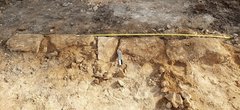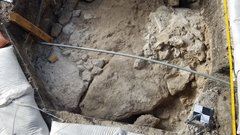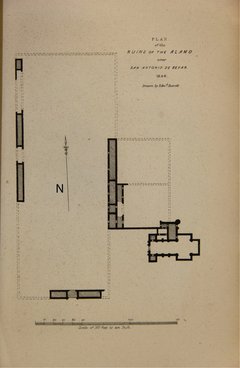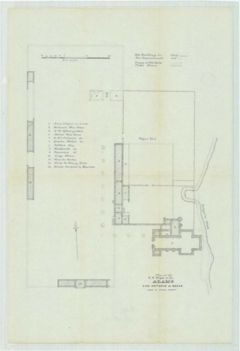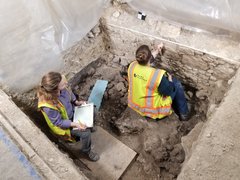For the final week of Texas Archaeology Month, we want to showcase a component of archaeology that may not be as flashy as an artifact but is equally important: the archaeological feature.
What is an archaeological feature?
A feature is an immovable, physical element of an archaeological site. Some features, like a hearth or roadway, can alert archaeologists to human activity in the absence of artifacts. However, artifacts and features are often found associated with one another. Features can be large, like a structural foundation, or small, like a posthole, which is a small, round stain in the matrix that forms when a wooden post decomposes or is burned. If left unprotected, archaeological features can be heavily impacted by environmental conditions and modern activities. Features are important because, unlike artifacts, features are found in the location where they were left by previous human activity and provide insight into prolonged use of a site.
Structural foundations are a common feature encountered by archaeologists. Structures built in the past are frequently torn down to make space for new development. However, sometimes the entirety of the structure is not removed, and remains of the foundation may be left intact. One reason this might happen is that over time there is an accumulation of soils and/or debris that builds over the original surface level, thus covering any remaining portions of the feature. Any element at a lower elevation will likely experience a higher accumulation of soils, sometimes resulting in buried portions. As time passes, the feature can become buried entirely.

